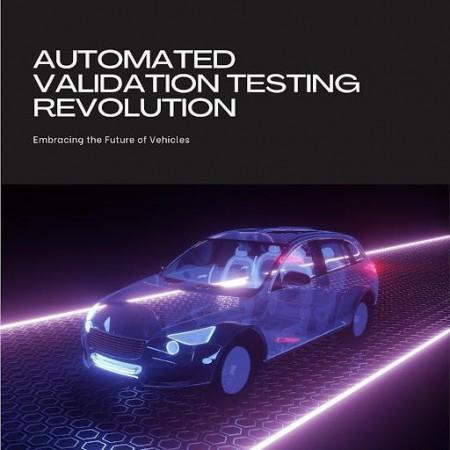
In recent years, the autonomous vehicle industry has experienced exponential growth, with the global market projected to reach $556.67 billion by 2026. This surge is driven by increasing demand for safer, more efficient transportation options. However, ensuring the safety and reliability of self-driving cars has become more complex due to the integration of advanced technologies like artificial intelligence (AI) and electric vehicle (EV) systems. This article explores the transformative innovations in automated validation testing, a key approach shaping the future of autonomous vehicle development, as highlighted by Sree Ramya Yendluri.
The Growing Need for Automated Testing
As autonomous vehicles become more advanced, they rely on complex networks of sensors, cameras, and software to make real-time decisions. Traditional manual testing methods can no longer keep up with the rapid technological advancements, as they are slow, labor-intensive, and prone to human error. A single test cycle can take weeks, involving large teams of engineers. Automation has become essential in self-driving car validation, offering the speed and scale necessary to test various driving scenarios and edge cases that manual testing simply cannot achieve efficiently.
Advantages of Automated Testing
Automated validation testing provides numerous advantages over manual methods, notably speeding up and improving the thoroughness of testing. Companies like Tesla and Waymo utilize automation to simulate millions of miles of driving daily, compressing years of human testing into weeks. Automated systems can replicate a wider variety of driving conditions, including dangerous scenarios like severe weather or sudden obstacles, enhancing vehicle safety and reliability. Automation also supports continuous integration and deployment (CI/CD), enabling frequent software updates. For example, Tesla's automated testing infrastructure allows weekly over-the-air updates, ensuring timely feature enhancements and quick responses to safety issues, significantly improving the development process.
Innovations in Simulation Tools
To address challenges in testing autonomous systems, companies have developed advanced simulation tools like NVIDIA's DRIVE Sim platform, replicating real-world driving conditions with high accuracy. These tools allow developers to generate sensor data and test decision-making algorithms. They also reduce data variability, a common issue in manual testing, where sensor readings can differ by up to 20% between identical test runs. Simulation platforms ensure reliable, repeatable results and enable developers to simulate hundreds of thousands of driving scenarios daily, greatly surpassing manual testing capabilities.
Addressing Infrastructure Challenges
The transition to automated testing has faced challenges, particularly the need for specialized infrastructure. Automated testing demands immense computing power and fast communication networks to process the large volumes of data generated by autonomous vehicles. To address this, companies have invested in advanced testing labs and cloud-based systems. For example, Waymo built a testing facility in California for controlled testing, while Tesla and Nvidia have invested in AI supercomputers and data centers. These infrastructure advancements have scaled testing capabilities, shortening development cycles and accelerating vehicle deployment.
The Role of Industry-Academia Collaboration
Sree Ramya Yendluri emphasizes the vital role of industry-academia collaboration in advancing automated testing. Research institutions offer expertise in machine learning, computer vision, and robotics, essential for developing innovative testing methods. For example, Stanford University's adversarial testing techniques identify weaknesses in autonomous systems, and such partnerships accelerate the creation of more robust, reliable self-driving technologies.
To conclude, the autonomous vehicle industry is rapidly evolving, making automated validation testing essential for future progress. Companies are investing in cutting-edge tools, infrastructure, and partnerships to overcome the limitations of traditional testing methods. By embracing automation, they can speed up the deployment of safer and more efficient self-driving cars. These innovations, combined with collaboration from academic institutions, are transforming the industry, ensuring the development of reliable and scalable autonomous vehicle systems.

















